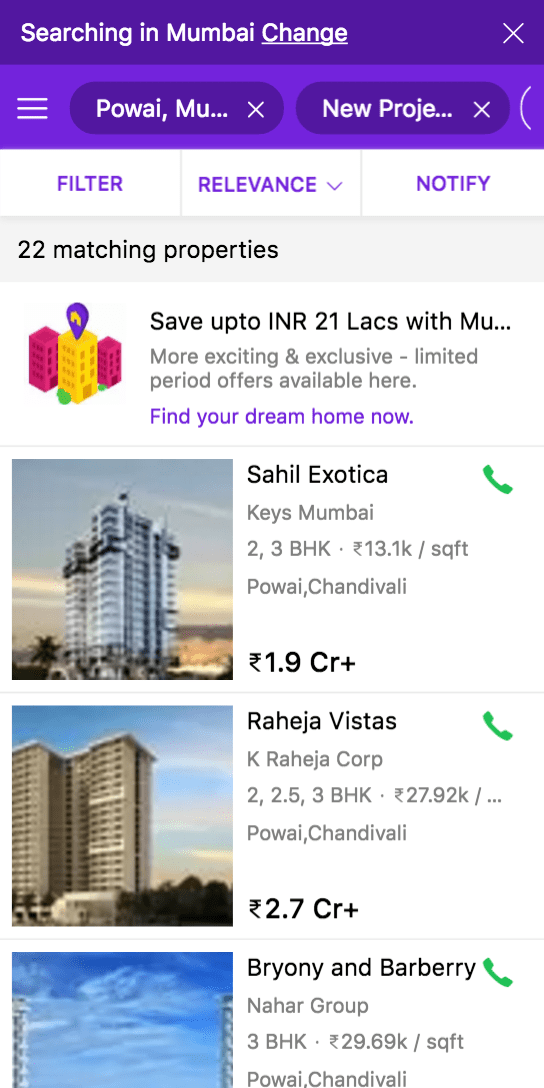
Results
- 38% more conversions
- 40% lower bounce rate
- 10% longer average session
- 30% faster page load
Company
Housing.com is one of India’s top startups. On track to receive 50 million visits this year, it has become one of the leading online real estate platforms in India. After building Housing Go, a Progressive Web App (PWA), they saw a 38% increase in total conversions across browsers. The new PWA also delivered higher-value users, with visitors spending 10% longer per session and returning more often.
Challenges
Housing.com knew their mobile users wouldn't tolerate slow load times, which significantly affect conversions. They measured the impact of users’ average page-load time and found that even a one-second improvement brought a significant boost in the conversion rate.
Poor connectivity and the prevalence of low-end devices also hindered Housing.com’s growth. They developed a native app so that mobile users could work offline and re-engage. But current and potential customers were very data-sensitive, because the cost of Internet access was still high, and many consumers hesitated to use data or space to download the native app.
Solution
Relying on technological advancements and the improved capabilities of modern web browsers and web applications such as Service Workers, IndexedDB, Add to Home Screen, and Push Notifications, Housing.com set out to create a PWA that was fast, efficient, and reliable. The result was a mobile web experience that is fast, uses less data, and re-engages users in multiple ways. With the new PWA, Housing.com saw conversion rates rise 38% and the bounce rate fall by over 40%.
Most Indian users reach the Internet via 2G and 3G networks, so a fast user experience is essential. To decrease load times, Housing.com added Service Workers and streamlined their site to help consumers quickly find what they’re looking for. Users can continue browsing properties and reviewing previous searches, all while offline. “High-end smartphones are not that prevalent in our target user base,” says Vivek Jain, Housing.com CPTO. “With our new PWA, we could get past our users’ hesitance to download our app in their low-end devices, yet give them a wonderful experience.”
The new strategy proved effective. Page-load performance increased by over 30%, and average time-per-session increased 10% across all browsers. “Understanding the network limitations of our users and the importance of a great user experience led us to build a PWA,” Jain says. “User experience is something that defines state-of-the-art applications.”
Related resources
Codelabs
Your First Progressive Web App Learn how to use the app shell model, service workers and more to build a Progressive Web App.
Udacity courses
Intro to Progressive Web Apps In this course you’ll get started working on your very first Progressive Web App - a web app that can take advantage of many of the features native applications have enjoyed. You’ll also get more experience in creating a web app that works offline using Service Workers. Finally, you’ll make your app installable to the user’s home screen with the Web App Manifest file.
